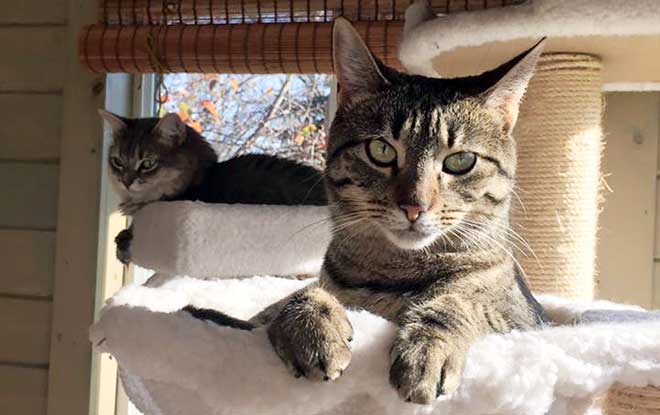Index Surge: Amplifying Your Insights
Stay updated with the latest trends and news across various industries.
Feline Shenanigans: Decoding Your Cat's Quirky Antics
Unravel the mysteries of your cat's quirky behavior! Discover tips and insights into their playful antics and unique personality traits.
Understanding Your Cat's Midnight Zoomies: A Look into Nocturnal Behavior
Understanding Your Cat's Midnight Zoomies can be a fascinating endeavor for any cat owner. These nightly bursts of energy often leave pet parents puzzled and amused as their feline friends dart around the house, seemingly getting their exercise at the most inconvenient times. This behavior, commonly referred to as nocturnal activity, is rooted in their natural instincts. Cats are crepuscular by nature, meaning they are most active during the dawn and dusk hours. During these times, their hunting instincts kick in, prompting them to chase invisible prey around the home.
To better understand this phenomenon, it may help to consider a few factors that contribute to your cat's midnight zoomies:
- Hunting Instincts: Even domesticated cats retain their predatory behavior, which can manifest in playful pouncing and sprinting around the house.
- Built-up Energy: Cats may be inactive during the day, leading to an accumulation of energy that is released during their energetic escapades at night.
- Environmental Triggers: Noises or movements outside your home can also stimulate your cat's instinct to hunt, prompting them to engage in these frenetic bursts of activity.

Why Does My Cat Knock Things off the Table? The Science Behind Feline Mischief
One of the most perplexing behaviors observed in our feline friends is their tendency to knock things off the table. While it may seem like mere mischief, there are several scientific reasons behind this behavior. Firstly, cats are natural hunters, and their instinct drives them to bat at objects to simulate the hunting of prey. By swatting items off surfaces, they engage in a playful behavior that hones their skills and satisfies their curious nature. Additionally, the motion of an object falling can mimic the movement of small animals, which instinctively draws their attention.
Another factor to consider is a cat's need for territory and dominance. By knocking objects off tables, a cat may be asserting its control over its environment. This behavior can be especially prevalent if the cat feels threatened or insecure. Understanding why your cat knocks things off the table can shed light on their emotional state and help you provide a more enriching environment. Ensuring that your feline companion has adequate stimulation and safe spaces to explore can significantly reduce this amusing yet sometimes frustrating behavior.
Decoding Cat Communication: What Those Quirky Sounds Really Mean
Understanding the world of feline communication can feel like unraveling a secret code. Cats possess a variety of sounds that convey their emotions and intentions, from soft purrs to loud meows. For instance, when a cat gives a gentle chirp or chatter, it often indicates excitement, typically in response to birds or small prey outside the window. On the other hand, a sudden, harsh yowl may signal distress or territorial warnings. It’s essential for cat owners to learn to interpret these sounds to foster a stronger bond with their furry friends.
In addition to vocalizations, body language plays a crucial role in how cats communicate. A cat that is feeling friendly may display its belly, while an agitated cat might puff up its fur and flatten its ears. Pay attention to the context surrounding these sounds; for example, a cat that follows you around meowing might be seeking attention or expressing hunger. By observing these behaviors and sounds, you can unlock the unique personality of your pet and deepen your understanding of their emotional landscape.